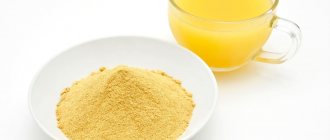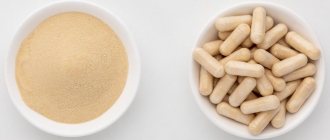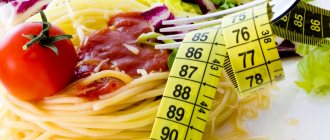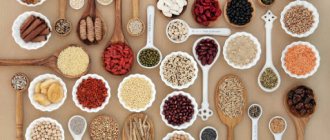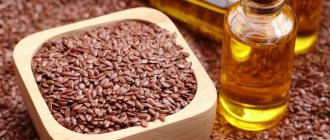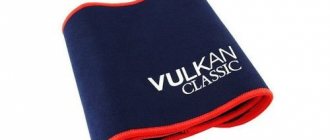What is pectin and what is it like?
Strictly speaking, there is no single pectin. Pectins (or pectic substances) are a whole group of polysaccharides formed by galacturonic acid residues. It is the polysaccharides contained in products that are responsible for texture: for example, hardness, density or, on the contrary, viscosity.
Pectins are found in vegetables, all fruits and some herbs. There are especially many of them in pumpkin, potatoes, tomatoes, cabbage, quince, lingonberries, gooseberries, as well as grapefruits, lemons, red and black currants, plums and, of course, apples. Actually, pectins are mostly produced from apples and citrus fruits, but in the world there is also the production of pectins from sugar beet pulp and a sea grass called eelgrass (this, by the way, is not an algae).
In small quantities, pectins act as thickeners, in large quantities - as a gelling agent like gelatin and agar-agar.
In the food industry, all pectins are designated with the code E440. So don’t be afraid of this additive on the label of gummy bears or marshmallows - they were made from completely natural ingredients.
Types by degree of esterification
Pectins are divided into several types according to the degree of esterification (that is, the strength of interaction with alcohol and acid). The higher this degree, the faster the pectin gels and the higher the temperature it can withstand.
Highly esterified pectins (label designation HM)
– substances that can gel at high acidity. At the same time, they will need a large amount of sugar or other dry substances for gelling. These are the most common pectins that are used by confectioners every day and with the help of which large batches of marmalade, marshmallows, marshmallows, etc. are produced.
Low esterified pectins (LM)
- these are pectins that are less dependent on acidity, but work only in the presence of calcium ions.
Amidated pectins (LMA)
– low-esterified pectins, which were treated with ammonia during the production process, which slightly changed their composition. But they begin to work with less calcium.
Low esterified pectin NH
also called reversible, meaning it can withstand heating and cooling without losing its gelling properties. It can be a tool for culinary experiments, as it is combined with agar-agar and gelatin.
Pectin FX58
– a special type of pectin with a low degree of esterification, suitable only for products with a high calcium content (milk and its derivatives).
Acid free pectin
contains calcium sulfate, is the most hygroscopic of all pectins and is suitable for berries and fruits that do not contain acids.
The chemistry of the process looks complicated only at first glance, but in reality choosing the required type of pectin is quite easy. Here's what Irina says about this:
– You need to understand why pectin is bought. If for jam, then apple or citrus is suitable: these types of pectin are highly esterified, their principle of action is based on a large amount of dry matter in the conditional jam and high acidity. That is, such pectins require a lot of sugar. Their operating principle is based on hydrogen bonds and hydrophobic interactions.
If you need to make a filling for a mousse cake, you need NH pectin or, for example, acid-free pectin. These are low-esterified pectins, they work completely differently. The calcium they contain helps create a stable structure with much less added sugar and in lower acidity conditions.
I usually choose NH pectin. It can work with the acidity of most fruits and berries and does not require too much sugar.
Reading the label: what else to pay attention to
With apple and citrus pectin
everything is clear: they are obtained from apples and citrus fruits. These are basic highly esterified pectins that can be used for home production of jam, jelly or confiture, marshmallows or marshmallows.
Yellow pectin
- it is the same! It’s just that in Europe they have a simpler attitude to classification and do not always indicate what exactly a given type of pectin is made from. But the raw materials are the same apple skins or orange peels. However, if this is a European product, it makes sense to read the instructions carefully, because one yellow pectin may differ in its properties from another. For example, yellow pectin with sodium lactate only works with acidic (fruit and berry) liquids.
The country where pectin is produced is not particularly important, but if you prefer exclusively domestic products, then we have to disappoint you: so far there is not a single pectin production plant in Russia. According to data for December 2021, construction of a plant is planned in North Ossetia. In Europe, large factories are located in Switzerland and Germany, in South America they are concentrated in Brazil and Argentina, in Africa - in South Africa.
When is it better to use pectin, and when to use its analogues?
Pectin is a thickening agent of plant origin, therefore suitable for vegetarians and vegans, as well as people who adhere to the rules of Judaism and Islam. In addition, the same gelatin has a fairly obvious “meaty” taste and therefore is not very good for desserts, but pectin does not have this taste.
True, gelatin has a lot of qualities that cannot be found in plant thickeners. In particular, it is almost 100% collagen and can be used to prevent diseases of bones, skin and hair. We wrote more about the beneficial properties of gelatin in a large article dedicated to it.
Compared to agar-agar, pectin gives dishes a more delicate, soft texture. It’s easy to make a mistake with the amount of agar, and then the dish will become “rubbery,” and pectin (if, of course, you do everything correctly) gels more delicately.
By the way, a popular myth says that pectin cannot be used for meat dishes, but this is not true. We give the floor to our expert:
– There are pectins that do not need either sugar or acidity. They can be used to gel nuts or fish. But aspic will have a completely different structure, more “chewy” and not so instantly melting in the mouth, because the stabilization temperatures of pectin differ from the stabilization temperatures of gelatin and affect our perception.
How to replace pectin
In nature, there are substances that have the same properties as pectin, namely:
- agar-agar;
- gelatin;
- carrageenan
Can pectin be replaced with gelatin?
Gelatin is a partially hydrolyzed collagen protein that can be completely colorless or have a yellow tint.
The substance is a viscous mass and is obtained as a result of processing animal connective tissue. This distinguishes it from pectin, which is of plant origin. The scope of application of the two substances differs. As a rule, pectin is added only when preparing sweet desserts, while gelatin has a wider range of uses. Pectin hardens exclusively at high temperatures, gelatin - at medium and low temperatures. Unlike pectin, gelatin gives the desired result without contact with other activating substances.
The properties of gelatin allow it to be an alternative to pectin; the only disadvantage of this substance is its reduced activity in an acidic environment.
Doesn't pectin gel? We don’t panic, we correct mistakes
So, a bag of pectin appears in your kitchen, you pour it into the future jelly, doing everything by analogy with gelatin or agar, and... nothing happens. It's sad, but fixable. We'll tell you how to do it right.
Properly diluting pectin
The main principle when working with any pectin from Irina Kogan: do not let it clump
. Sticky pectin particles are difficult to dissolve, which means that the desired degree of thickening of the mass will not be achieved.
Regular apple pectin from the nearest supermarket (highly esterified) should be mixed with the sugar used in the recipe and added to a warm (but not higher than 45 degrees) liquid. Don’t forget to stir constantly with a whisk, otherwise those lumps will appear! Then you need to bring the liquid to a boil, turn it off, add 4 g of citric acid and wait until the future mousse or marmalade cools down. Citric acid is especially necessary if the dish is prepared from sweet fruits with a minimum of acids, for example, peaches or apricots. Often citric acid is already added to yellow pectin at production: read the information on the packaging!
And do not forget that these pectins are irreversible, that is, they cannot be heated and cooled several times.
Low-esterified pectins are more expensive, more “professional” and have a valuable reversibility quality for the confectioner. The mass with them can be cooled, then reheated and poured into another form if, for example, capricious household members decided that marmalade in the form of hearts is tastier than in the form of rectangles.
We check the storage period and conditions
Regular apple, citrus and yellow pectins should be stored in opaque, tightly sealed jars as these substances tend to weaken over time and are susceptible to exposure to sunlight. The shelf life of pectin is no longer than 12 months.
Agar-agar
Replacing gelatin with agar is quite justified. It is a substance of natural origin. Even if left at room temperature for a long time, agar agar dish will hold its shape longer than using gelatin.
However, you need to take into account that a medium with high fat content negatively affects the characteristics of agar agar. Therefore, it should be used for desserts with a minimum percentage of fat content, such as marshmallows, marshmallows or marmalade. You also need to take into account that agar agar is required less than jelly.
The effect of pectin on the body
Benefit
- In moderation, pectin is a good remedy for normalizing the microflora of the stomach and intestines and relieves inflammation of the mucous membrane.
- Pectin has been proven to reduce the level of “bad” cholesterol. Studies have also been conducted that show a slight improvement in the condition of prostate cancer patients. Regular consumption of foods rich in pectin helped curb the growth of cancer cells.
- Pectin is used not only in the food industry, but also in pharmaceuticals and medicine. Primarily to create soluble transparent capsules for medicines. Pectins are also one of the most important components of the diet of people forced to be in an environment contaminated with heavy metals or radioactive particles. The thing is that pectin molecules partially neutralize the effects of radionuclides and heavy metal ions and help the body cope with intoxication. So highly purified pectins are used for the production of special and dietary foods.
- Pectin has moisturizing, bactericidal and regenerative properties, which makes it a popular component of cosmetic creams, face and body lotions, lipsticks and shampoos. Some researchers are considering pectin as a means for external use against burns and wounds, because it contains galacturonic acid.
Harm
- Eating too much food rich in pectin can cause diarrhea and stomach cramps (think about what happened when you overate apples as a child).
- There is no allergy to pectin. However, pectin, obtained from citrus peels, can trigger an allergic reaction. In this case, choose apple pectin or switch to any other thickener.
- Pectin reduces the body's ability to absorb beta-carotene, a precursor to vitamin A. Beta-carotene is a natural immunostimulant and is vital for cells to protect themselves from the effects of free radicals.
Pectin - use in cooking
The gelling agent is popular in the food industry. Thanks to pectin, it is possible to preserve not only the structure of the final product, which will not change during transportation.
- Pectin instantly gels the product, while pieces of fruit are evenly distributed in the mass.
- Pectin is used in making yoghurt. The substance is responsible for the soft structure of the dairy product.
- Pectin gives drinks and juices a more pronounced aroma and taste.
You can use pectin at home, when preparing preparations - preserves, jams and other tasty and sweet dishes. Natural polysaccharide can be purchased on store shelves or made independently.
Homemade apricot jam. 5 step-by-step recipes
Bonus: a simple recipe for soft citrus marmalade with pectin
Ingredients:
500 g orange juice with pulp (or a mixture of orange, tangerine and grapefruit, depending on what is in the refrigerator), 500 g sugar, 100 g glucose or maple syrup, 15 g apple pectin, 4 g citric acid, 4 g water.
Procedure:
In a dry container, thoroughly mix the pectin and 50 g of sugar.
Mix the juice with pulp, the remaining sugar and glucose (maple syrup) in a saucepan, heat to 45 degrees, and then carefully add the mixture of sugar and pectin. Stir the heating mass constantly to avoid pectin sticking together. Let simmer for 1 minute, then add citric acid and mix thoroughly again.
The finished mass can be poured into any shape (you can even into a regular soup plate), after covering its bottom with cling film, or into separate silicone molds. Leave to cool in the refrigerator for 10–15 hours. The next day, brew strong coffee in a cezve, take out the marmalade and enjoy!
